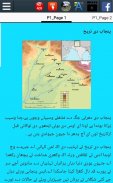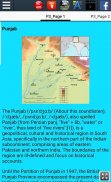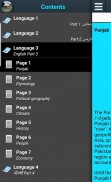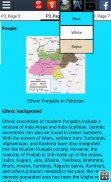










پنجاب دی تریخ - History of Punjab

Description of پنجاب دی تریخ - History of Punjab
The History of the Punjab concerns the history of the Punjab region the Northern area of the Indian Subcontinent that is split between the modern day countries of India and Pakistan. Historically known as Sapta Sindhu, or the Land of Seven Rivers, only two rivers Sutlej and Beas flow through Punjab state in India. The third river Ravi flows partially in Punjab, mainly along the international boundary of India and Pakistan and then enters Pakistan. The other two rivers Chenab and Jhelum flow in the Punjab state in Pakistan. All these five rivers are tributaries of Indus river. All these five rivers finally merge into Indus river directly or indirectly and the Indus then terminates into Arabian Sea near Karachi city in Pakistan. The name Punjab was given by later Muslim conquest in the Indian subcontinent. Ancient Punjab region was the primary geographical extent of the Indus Valley Civilisation, which was notable for advanced technologies and amenities that the people of the region had used. The region was historically a Hindu-Buddhist region, known for its high activity of scholarship, technology, and arts. Intermittent wars between various kingdoms was characteristic of this time, except in times of temporary unification under centralised Indian Empires or invading powers.

























